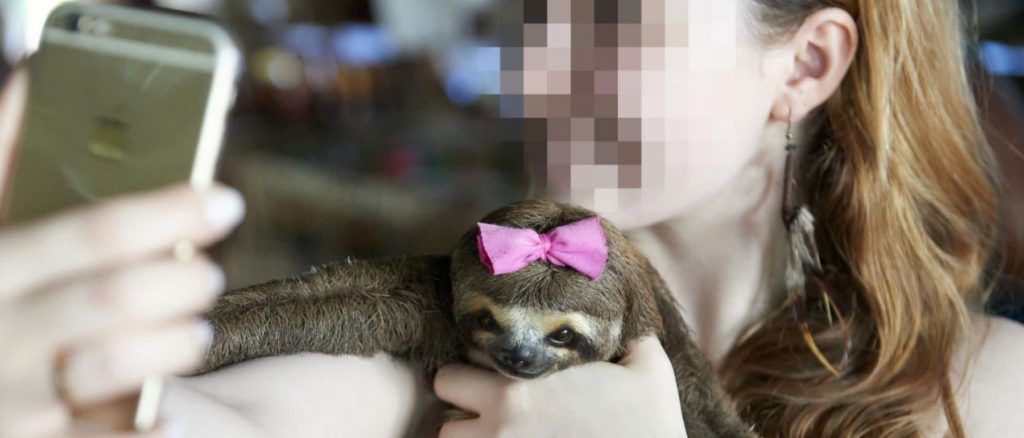International nonprofit World Animal Protection (WAP) released a report on Tuesday, Oct. 3 revealing the blatantly cruel manner in which tour operators in South America capture Amazonian animals for ‘selfie’ purposes. The report’s two case studies targeted two major Latin American cities: Manaus, Brazil and Puerto Alegria, Peru. And the findings were grim.
Investigators found a multitude of animals bound, beaten, and injured for the tourist industry. Sloths were tied to trees with rope, and none survived in captivity longer than six months. Toucans were found with large abscesses on their feet, green anacondas were wounded and dehydrated, and caimans had their jaws bound with rubber bands. Additionally, both an ocelot and a manatee were found contained in minuscule enclosures, and a giant anteater sustained injuries from multiple beatings.
“We know that people take selfies with wildlife because they love animals, but they usually don’t realize that these kinds of photo ops aren’t authentic — they conceal the hidden cruelty behind the scenes,” Cassandra Koenen, WAP’s head of wildlife campaigns, told Lady Freethinker.

Image Credit: World Animal Protection
In Manaus, capital of Amazonas, the largest state in Brazil, tour companies offered photo opportunities and direct contact with wild animals on 94 percent of tourist excursions. This type of activity, which can be harmful and even fatal to threatened or endangered Amazonian animals not found anywhere else in the world, was also explicitly encouraged during 77 percent of excursions.
In Puerto Alegria, tour officials used at least 40 animals from 24 different species for selfie purposes during excursions. The International Union for the Conservation of Nature (IUCN) classified at least five of these species as “threatened”, and the Convention on the Trade in Endangered Species (CITES) lists 75 percent of the featured species.
Unfortunately, this type of animal cruelty is not limited to the Amazon Biome, and happens to countless animals all over the world. When exploring the great outdoors, remember that you are visiting an animal’s home, and be mindful to the inhabitants. A selfie is never worth an animal’s suffering.
“The good news is that everyone can make a difference, by joining our movement and signing up to take action to reduce the use of wildlife selfies on social media,” said Koenen.
Click here to sign up for the Wildlife Selfie Code and help stop the cruelty.







